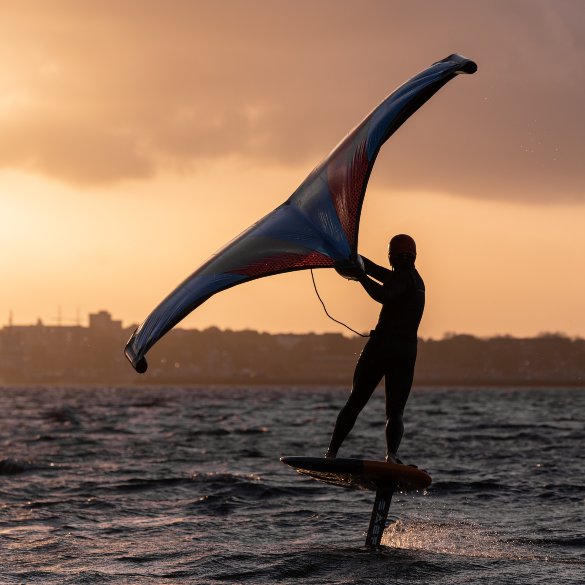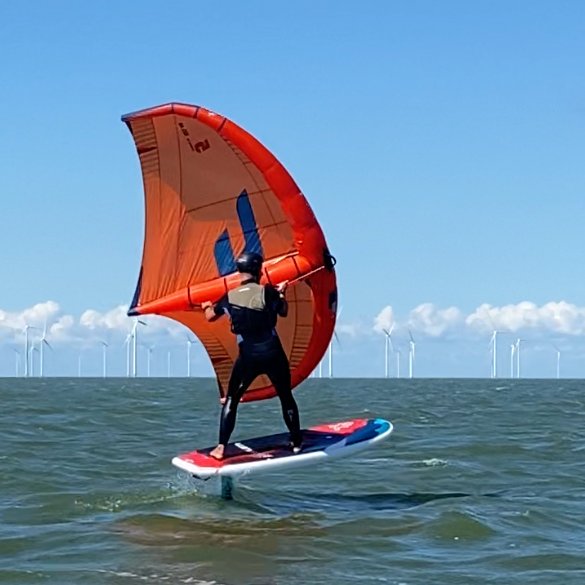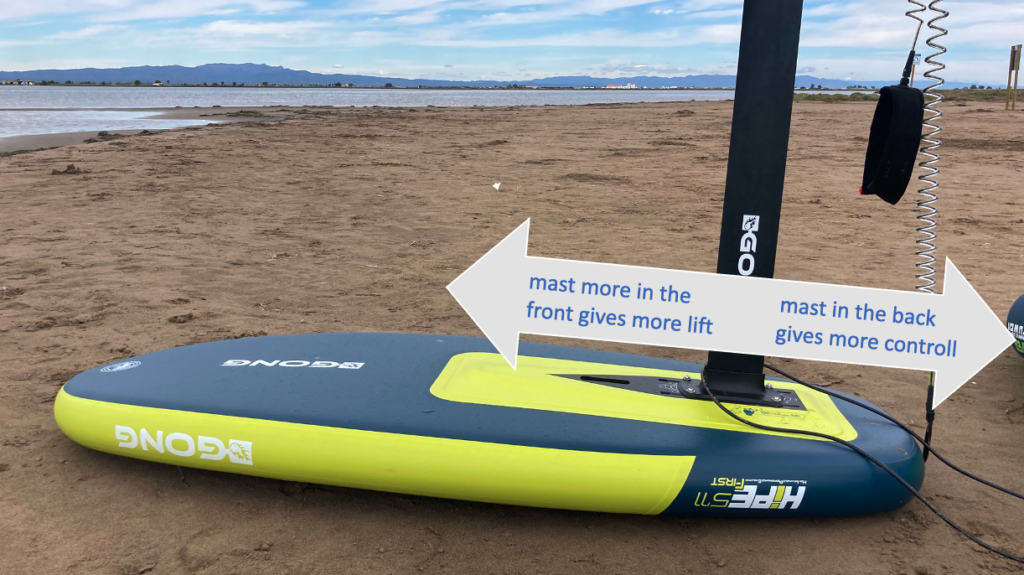Finding the perfect balance: Foil and mast placement
Where do you place the foil when wingfoiling can have a great impact on the way you ride. The proper foil and mast placement on your wingfoil board is crucial for achieving optimal stability, control, and performance on the water. In this article, we’ll explore the factors to consider when determining the placement of your foil and mast, helping you find the sweet spot that suits your riding style, skill level, and local conditions. It’s like whether to use footstraps or not: a personal decision. But there are some pointers we can give you.
Understanding foil placement
The foil is the heart of your wingfoil setup, and its placement on the board significantly affects your riding experience. The foil’s position along the board’s length, also known as the fore-aft position, determines the balance and stability of the board. Placing the foil too far forward can create excessive lift, making the board prone to nose-diving.
On the other hand, positioning the foil too far back can cause instability and difficulty in initiating turns. Experimentation is key to finding the optimal placement that suits your weight, riding style, and board design.
Placing the foil in the right position, allows for a smooth ride that consumes less energy from the surfer. The worst the configuration is, the more energy you use to correct the position and altitude of your equipment.
Since this is all also a bit personal and different for every rider, trying different configurations is a good idea, so you know what feels right for you.


Here you see a rider in The Netherlands with a slight nose-up configuration. The foil is configured a bit towards the back of the centre, but not entirely in the back. This allows for the board to pitch up a bit while keeping control of flight.
Considerations for mast placement
The mast, which connects the foil to the board, also plays a vital role in wingfoil equipment decisions and wingfoil performance. The mast’s position influences the board’s angle of attack, stability, and control. A general guideline is to position the mast slightly forward of the board’s center of gravity. This placement helps maintain a balanced ride and allows for better control during manoeuvres. However, mast placement can also be influenced by personal preference and riding conditions. Advanced riders may experiment with different mast positions to achieve specific characteristics, such as increased speed or improved turning response. As you improve, you will make different decisions while choosing more advanced gear.
More towards the front
Typically, the more you move the mast towards the front, the more the board will try to rise out of the water. This may enable you go take-off easier. It will probably also cause the need for more effort on your part to keep control of the board when flying, because it wants to keep going up. It requires for you to stand more towards the front of the board when riding, so you compensate for the extra lift the board tends to look for.
More towards the back
If you place the mast in the back position on the board, it will cause for the board to not lift as much out of the water. This means you need more speed to get on the foil, but it also consumes less energy to keep controll when flying. You can stand more towards the backside of the board while riding.

Finding the sweet spot
- Initial Positioning: Start with the recommended foil and mast placement suggested by the manufacturer for your specific board model. This initial position serves as a good starting point for most riders.
- Experimentation and Adjustment: Wingfoil conditions and personal preferences can vary, so it’s essential to experiment and make slight adjustments to find the optimal placement. Gradually move the foil and mast forward or backward in small increments, noting the changes in stability, lift, speed, and maneuverability.
- Weight Distribution: Consider your weight distribution on the board when positioning the foil and mast. Shifting your weight forward or backward can affect the balance and trim of the board. Experiment with subtle weight shifts during your sessions to find the optimal combination of foil and mast placement that complements your weight distribution and riding style.
- Local Conditions and Riding Style: Tailor the foil and mast placement to your local wingfoiling conditions. If you frequently ride in choppy or rough waters, slightly shifting the foil forward may help improve stability. If you prefer more aggressive turns and maneuverability, adjusting the foil and mast slightly back may enhance responsiveness.
- Recording Observations: Keep a record of your foil and mast positions, along with notes on how each adjustment affects your riding experience. This record will serve as a reference for future sessions and help you fine-tune your setup over time.
If you are a beginner wingfoiler
Probably the best foil and mast placement for beginners is to put the mast in the middle. Too far to the front means your board will get up too soon and you will lose control. Too far from the back may cause for you to not get out of the water and on to the foil. Bring your tools so you can adjust the configuration if you notice it’s needed. Read the beginners guide for wingfoilers here.
Keep in mind that not only the position of the foil is important, but also the position of your body on the board has a big impact. In the end, the way your equipment behaves on the water depends on all these factors:
- Position of the foil
- Weigh distribution of the rider on the board
- Positioning of your feet on the board
- The type of foil and wing size
Conclusion: Foil and mast placement
Finding the optimal foil and mast placement on your wingfoil board is a process of experimentation, adjustment, and personal preference. Understanding the impact of foil and mast positioning on stability, control, and performance is key to unlocking the full potential of your wingfoil setup. Remember to consider factors such as weight distribution, riding style, local conditions, and personal preferences when making adjustments. By continuously fine-tuning your setup, you’ll be able to achieve a balanced and responsive ride, allowing you to soar across the water with confidence and precision.
